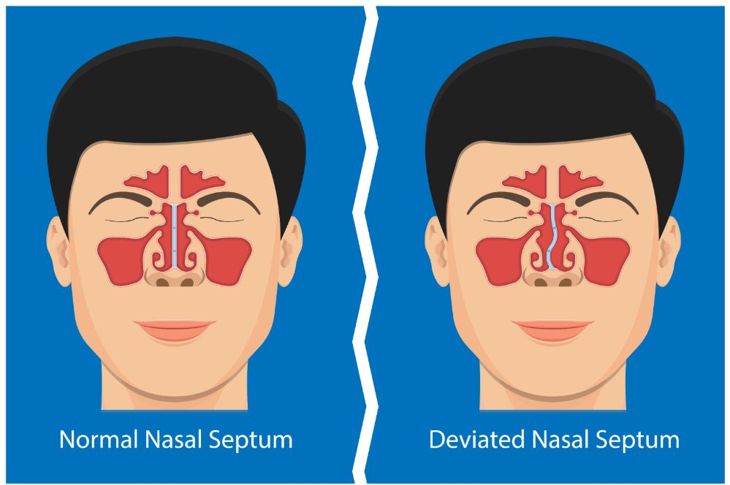A deviated septum is a common deformity in the nasal cavity. Experts estimate 70 to 80% of people have a deviated septum. For some, symptoms are barely noticeable, while others experience chronic breathing difficulties and discomfort. There are treatments available for a deviated septum regardless of severity. Some are simple and non-invasive, but surgery is also an option for more problematic cases.
What is a Deviated Septum?
The nasal septum is the thin wall between nasal passages. It extends from the nostrils to the back of the nose and consists of cartilage and bone. This wall is usually straight, but it may deviate away from the middle. Sometimes, the wall is just slightly off center, making one nostril a little larger than the other but not causing any noticeable problems. On the other hand, this defect can also be so severe as to significantly restrict airflow through the nasal passages.
Causes of a Deviated Septum
A lot of people are born with a deviated septum. The misalignment occurs during fetal development and may be evident at birth. Sometimes, the deformity is not noticeable or does not cause symptoms until later in life as growth or other physical changes worsen the obstruction over time. A deviated septum can also result from physical injury to the nose caused by a car accident, fall, or birth injury.
Effects on Breathing
A deviated septum can block the nasal passages. When someone with a significantly deviated septum suffers from a cold or allergies, the irritation and inflammation make breathing through the nose even more difficult, particularly at night. Some people find their nasal passages get so dry that they develop recurring nosebleeds.
The Nasal Cycle
The nasal cycle is a natural phenomenon that usually goes unnoticed. A person with a severe cold might notice their congestion alternates from one side of the nose to the other. This phenomenon occurs all the time, but most people don’t notice it. Someone with a significantly deviated septum is usually aware of the nasal cycle due to the abnormal amount of obstruction present in the nasal cavity.
When to See a Doctor
Because deviated septums are usually present from birth, most people with severe obstruction realize they have one at a young age. The condition can worsen over time, however, so it is important to see a doctor when symptoms progress. Anyone who experiences frequent nose bleeds, recurring sinus infections, or blocked nostrils that do not respond to treatment should see a doctor for evaluation.
Treatment
Mildly deviated septums typically require no treatment, but there are many steps one can take to manage and alleviate symptoms. Decongestants, antihistamines, and nasal sprays can ease congestion and post-nasal drip. A humidifier may help prevent nose bleeds, and a neti pot can help clear significant stuffiness during a cold.
Surgical Correction
People with severe obstruction from a deviated septum will likely require a septoplasty. This surgical procedure is done from inside the nose and leaves barely visible scars. During the surgery, parts of the septum may be removed to relieve obstruction, or the surgeon may adjust the cartilage and put back in place.
Recovery
After nasal surgery, the face may be puffy, and the person might experience pain or bruising around the eyes. Due to the surgery’s minimally invasive nature, most people can return to work or school quickly. Some recover in only a few days but should avoid sports and other activities that could lead to injuries to the nose for some time following surgery.
Complications
The more severe a deviated septum is, the more likely a person will experience complications. The most common ones are dry mouth due to chronic mouth breathing, pressure in the nasal passages, and interrupted sleep. Bloody noses are also possible due to irritation of the nasal lining.
Prevention
While nothing can prevent the development of a deviated septum during fetal development or childbirth, safety measures can prevent injury to the nose and lower the chance of developing or worsening the issue. Athletes should always wear helmets and facemasks when playing contact sports, and wearing a seatbelt can prevent significant facial damage in the event of a car accident.

 Home
Home Health
Health Diet & Nutrition
Diet & Nutrition Living Well
Living Well More
More




















